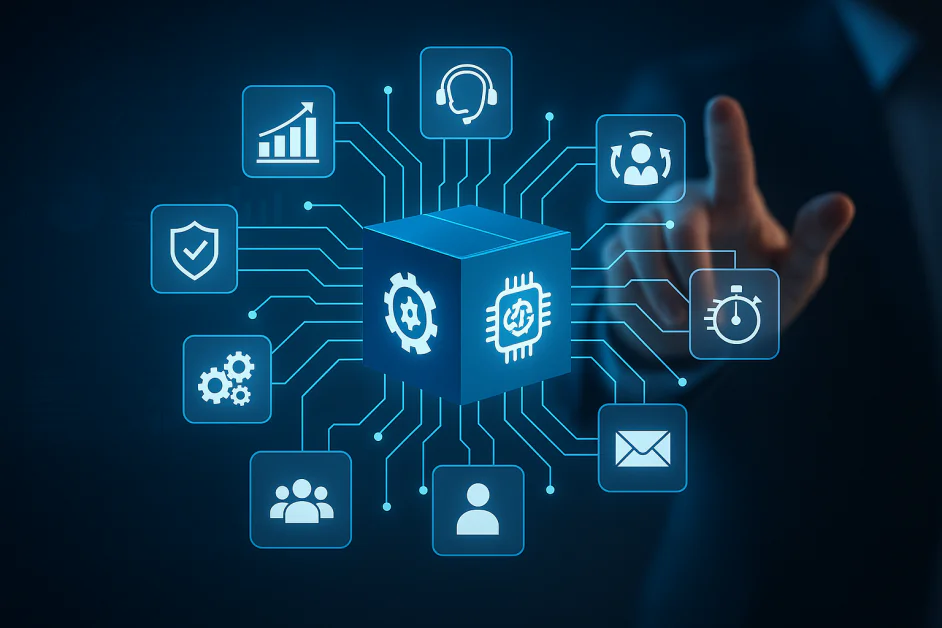Thought Leaders
Why Hyper-Customizable Automation is The Future of Business Agility

AI is reshaping how organizations operate — and fast. According to IBM, 86% of executives believe AI agents will make process automation and workflow reinvention more effective by 2027. As business demands grow more complex, leaders are under pressure to unlock true organizational agility that drives measurable impact. This moment marks a shift: from relying solely on traditional automation to embracing AI strategies that are adaptive, real-time, and resilient. For many, now is the time to reimagine how work gets done — before the next wave of transformation hits.
AI That Acts: Moving Past Traditional Automation for Enterprise Agility
While valuable, today’s “smart” automation is no longer enough to support the pace and complexity of modern enterprise operations. Relying solely on legacy systems, static rules, and fixed workflows slows organizations down – limiting their ability to adapt, scale, and respond to the unexpected.
In today’s rapidly evolving landscape, enterprises must move beyond the rigidity of traditional automation and embrace the next frontier: agentic AI. Agentic AI isn’t just intelligent — it’s intentional. These systems can observe, analyze, learn, and act without constant human input. Unlike static automation, agentic AI adapts in real time to specific business contexts, from reducing service wait times and accelerating onboarding to handling exceptions in compliance and fraud scenarios. It’s this shift — from automation to orchestration — that gives enterprises the agility to operate smarter, faster, and with greater resilience. Agentic AI doesn’t just make processes more efficient; it empowers organizations to act with precision in the face of complexity.
Rebuilding Business Agility with Hyper-Customizable Workflows
With agentic AI comes precision, primarily relating to modular architecture. This allows businesses to break down functionalities into interchangeable pieces for assembly and reassembly. Low-code and no-code capabilities allow users, not just developers, to adapt and extend automation. This democratization empowers frontline teams to solve problems quickly without relying on developers. Furthermore, hyper-customizable harnesses real-time analytics and machine learning to enable them to learn from data, predict outcomes, and optimize performance. This makes real-time orchestration of complex, dynamic processes across systems and departments vital.
Companies that leverage hyper-customizable platforms experience profound benefits, including unparalleled precision in automation, a drastic reduction in manual intervention, and faster response times for both internal and external triggers. Here are five ways adopting hyper-customizable automation will transform business agility for enterprises:
- Real-time Decision Making: Immediate, data-driven responses to market shifts or disruptions.
- Operational Resilience: Anomaly detection, diagnosing issues, and processing self-healing for minimal downtime.
- Enhanced Customer Experience: Tailored communications and recommendations based on real-time data for deeper loyalty.
- Innovation Acceleration: Offloads repetitive tasks, giving teams more time to focus on strategic growth and creative problem-solving.
- Competitive Advantage: Faster reactions and optimized operations for superior customer experiences.
From Adoption to Action: Why Hyper-Customization is a Strategic Imperative
Hyper-customizable automation isn’t just another IT upgrade. It’s a business-critical capability that demands a cross-functional strategy and cultural readiness. Business leaders must first understand that hyper-customization demands a cultural shift within their organization. Before anything, there must be an agile mindset already in place, encouraging experimentation, continuous improvement, and cross-functional collaboration. When equipped with the right education, employees see AI not as a threat, but as a workflow enhancer.
Second, business leaders must implement and utilize the right platforms and scalable infrastructure. This includes modularity, integration capabilities, and advanced AI/machine learning functionality. Open architectures support scale, reduce costs, and enable flexibility across systems.
Every organization needs a robust data strategy, foundational to technological adoption. For effective agentic AI, businesses must ensure high-quality, accessible, and integrated data feeds. When paired with AI, hyper-customizable platforms become adaptive—learning from data, evolving processes in real time, and personalizing at scale. Data governance and simplifying data silos must also be prioritized for successful adoption. Data governance is crucial for improving process agility by implementing customized, flexible solutions, streamlining, and optimizing processes for risk management, client reviews, and data quality/privacy.
Businesses must also develop employee skills through training to leverage and manage hyper-customizable platforms. This includes upskilling for new roles in AI supervision, data science, and automation architecture, all essential for success. This means creating comprehensive training programs covering technical aspects of these platforms and strategic implications of AI and automation. Fostering a culture of continuous learning and adaptation within the workforce will be crucial to maximizing benefits.
Organizations should also consider starting small and scaling from there. First, it is important to identify high-impact and low-risk areas for initial implementation. Then, measure success to eventually expand the scope. Success can look like an increase in customer satisfaction scores due to faster and more accurate resolution of common issues, a reduction in paperwork and data entry errors, automation of invoice processing and faster payment cycles, and faster identification and resolution of production line issues, which would minimize downtime. Enterprises that embrace this iterative, data-first approach to hyper-customization won’t just optimize — they’ll future-proof. In a market defined by constant change, that’s not just smart — it’s essential.
Beyond Smart: An Adaptive, Actionable Future for Enterprises
As we move deeper into the AI era, “smart” automation alone is no longer enough to deliver the business agility today’s enterprises demand. The future belongs to organizations that adopt AI that is not only intelligent, but adaptive, composable, and built to act.
Hyper-customizable automation provides the foundation for transforming real-time insights into immediate, meaningful outcomes. It empowers businesses to move faster, respond to change with confidence, and deliver differentiated experiences, all while accelerating innovation and maintaining operational excellence.
Investing in adaptive, actionable AI isn’t just about staying current; it’s about building resilience and future-proofing the business. The enterprises that lead the next wave of transformation will be those that don’t just use AI to think, but to act.












